Are you considering a home inspection but worried about potential hidden defects and safety hazards that might go undetected?
Do you want to ensure your property is thoroughly examined to protect your investment?
Discover the benefits of incorporating infrared technology into your home inspection and gain peace of mind about your property’s safety and efficiency.
Periodic home inspections are quite essential if you are hoping to keep your home in good condition for a long while. Infrared thermographic inspections produce the best results. Infrared thermography is the latest technology in home inspections industry. There are many benefits to choosing an infrared inspection over all the other types of home inspection.
Infrared thermography is a home inspection technology that takes advantage of thermal differences on surfaces, to detect faults in various systems in a building. The technology can be used to inspect the insulation system, the plumbing system, or the electrical system. It can also be used to detect cracks in walls, and water leakages on the roof. The applications of infrared thermography in a home inspection are many.
In this article, we are going to go through the various benefits of opting for infrared thermographic inspection of the other methods. The benefits are quite overwhelming, and above all, you get to be sure that no fault has been left behind. Before we get to the actual benefits, let’s first explore the instances in which an infrared home inspection is necessary.
Buying a New Home
It is quite obvious that you need a to thoroughly inspect a home before you pay for it. The inspection is essential, whether it is a new or an old home. It would be unfortunate to get into a new home, only for all the systems to start failing. Also, if you are to ensure your home, the insurance company will require an inspection report. A positive report attracts low monthly premiums for insurance.
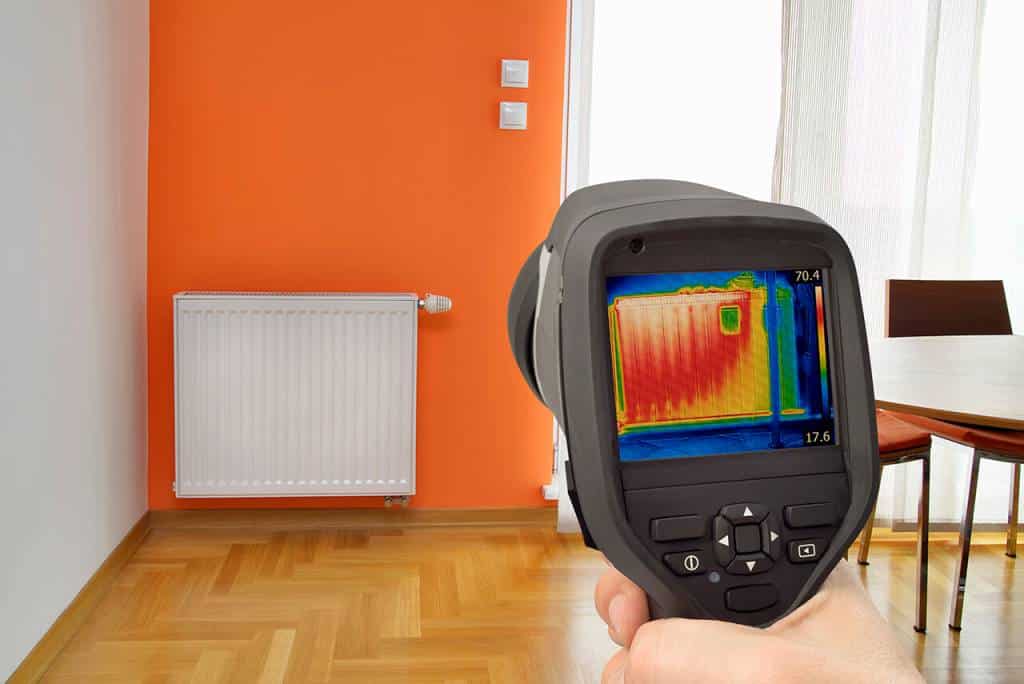
There is no better way to have that inspection done than commissioning an infrared inspection. An infrared inspection will be able to fully investigate all the essential systems in your home. The aim is to ensure you get the value that you pay for.
Selling a Home
While you are trying to sell a home, it would do you a lot of good if you had an infrared thermographic inspection conducted. You display the inspection report alongside your listing. A positive report would certainly inspire many people to check out the home.

You would also be able to put up a pretty price alongside the listing, and still attract enough attention. In an ideal situation, the inspection can help you value your home, attract potential buyers, and ultimately sell the home much quicker.
Regulations
Certain jurisdictions require homes and buildings to be inspected periodically, to ensure they remain up to standards. Almost all commercial and shared-residential buildings are subject to such regulations. Infrared thermographic inspections are quite acceptable for the authorities. In fact, with the current efficiency of the technology, most authorities prefer or recommend infrared thermographic inspections.
Routine Maintenance
Every part that holds your building together is prone to wear and tear. It is therefore only logical that you take the necessary steps to keep everything in good condition. The only way to know where to start is to conduct an inspection. You do not want to spend money doing unnecessary repairs and replacements. Repairmen will find a fault with almost everything in your house and charge you a ton to do nothing. Infrared thermographic inspections will help you to avoid getting duped.

We now look into the benefits of including infrared inspections in your home inspection regimen. We’ll look at them in categories of the various systems that could use infrared thermographic inspections.
How are Infrared Thermographic Inspections Conducted
Infrared thermographic inspections are conducted using infrared imaging camera. All surfaces or objects have the capacity to absorb or emit heat depending on the surrounding conditions. They will absorb heat is the surroundings are warmer and emit heat if they are cooler. Heat is normally emitted in the form of infrared rays.
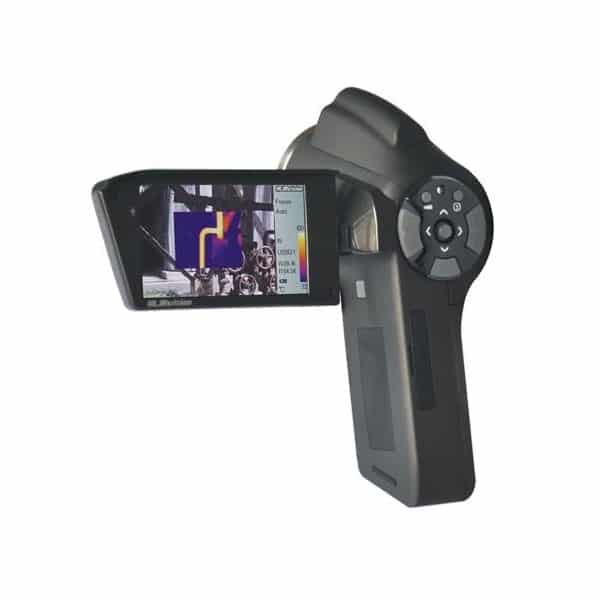
Infrared imaging cameras capture these rays and use them as a measure of temperature. Images of the objects are also shown on the camera’s screen and are given a certain color depending on their infrared emissivity or temperature level. The colors range along the wavelength spectrum. It is this color differences that inspectors observe and be able to see the differences in temperature. Areas of the home that have abnormal temperatures are often considered to be faulty.
Benefits if Infrared Inspections On Insulation Systems
Insulation is a very important aspect of a home, especially if you live in places with extreme weather conditions. When it gets extremely cold or hot outside, indoors is the only place you can seek refuge. It, therefore, needs to be able to offer the best conditions.
You must have a working HVAC system in such circumstances. The insulation in the home, ensures the conditions inside the house are kept as provided by the HVAC system. For instance, if it is extremely cold outside, you will need to turn on your heater. Your home’s insulation needs to be perfect to ensure none of the heat is getting lost. Poor insulation causes you to incur huge HVAC system energy bills.

Before the onset of infrared thermographic imaging, inspection methods for insulation systems were highly ineffective. Insulation defects cannot be detected visually. Also, by the time you notice that heat is leaking through your walls, the insulation has continued to deteriorate over a long time.
Infrared inspections made it incredibly easy to detect insulation faults. The only requirement is that there be a significant temperature difference between the air inside the house and that outside. Take for instance a situation where the air inside the house is warm, and that outside is cold. If there is a leak, it is easily captured by the infrared imaging camera.
The warm air inside the house will try to escape through the leaks when the air outside is cold. When that section of the house is inspected with the infrared camera from outside, a jet of differently-colored warm air is shown oozing from the wall.
The other problem with insulation is wet patches on the roofs and walls. The patches also tend to interfere with the temperature conditions inside the house. They absorb heat from inside the house, making it cooler while you are trying hard to warm it. We will see how such patches are identified using infrared thermographic inspections in the plumbing section.
As evident, infrared thermographic inspections make it extremely to capture leaking points of an insulation system. This ensures you are able to repair such faults in time, and save yourself from paying hefty heating or cooling bills. Ultimately, you will end up living in a house with much better temperature conditions.
Benefits of Infrared Inspections on Plumbing Systems
Infrared thermographic inspections are used on plumbing systems as well. In this application, it offers just as many benefits as in the insulation application. Infrared inspections help to detect where there are leaks on the plumbing system. All modern houses have water and drainage pipes running all over. These pipes undergo wear and tear. They might also get damaged for one reason or the other. When this happens water starts leaking in various sections of the house.
Water leaks are a very undesired, and at times hazardous situations. We will not get into the nitty-gritty of the dangers of water leaks in a home, but they are faults that need to be repaired immediately they are detected. Note that water pipes are always inside the walls, above ceilings, or under floors. It is, therefore, highly unlikely that you will notice a water leak immediately it starts.
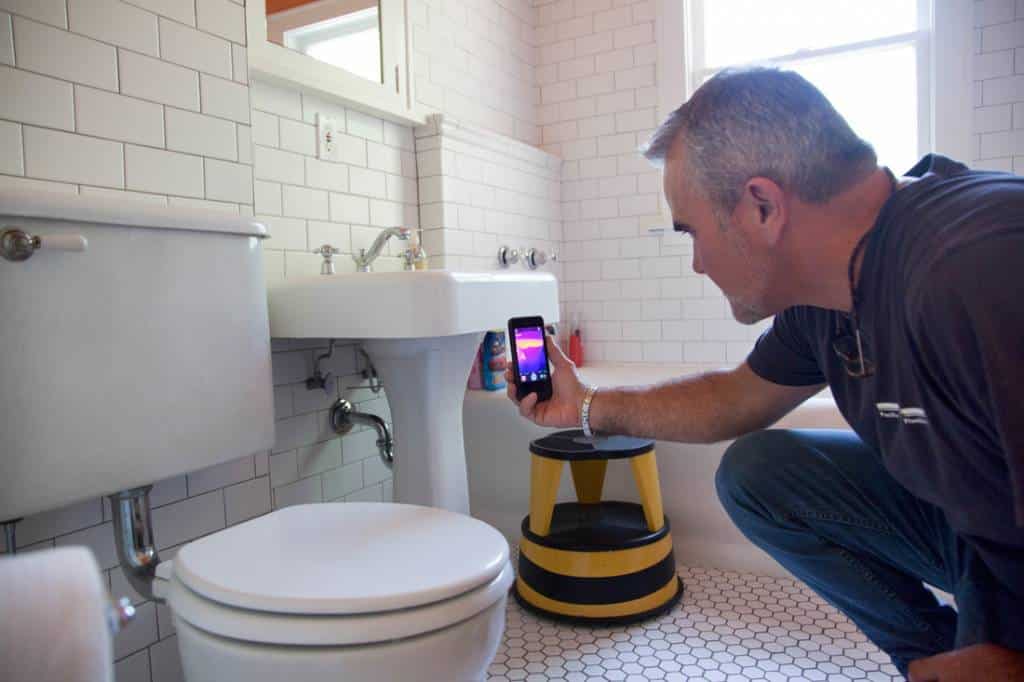
An infrared thermographic inspection is the best way to detect pipe leaks. Normally the water inside the pipes will have a different temperature than the air outside. When the pipes are inspected using the infrared imaging camera, the leaks are clearly detected. The other thing that the inspection looks for is wet patches on walls and ceilings. Wet patches tend to absorb more heat from the surroundings. A wet patch on the wall or ceiling will, therefore, appear warmer on the imaging camera.
Wet patches may also be as a result of a leaking roof. These patches often make the air in the house humid. On top of causing high heating bills, it exposes you to a number of air-borne diseases. Infrared inspections will help identify all the problems with either the pipes or the roof or even both so that you can have them repaired before they cause any further damage.
The other impressive aspect of infrared inspection on plumbing and drainage is that you never had to demolish walls or tear down roofs in order to access the pipes. So long as the temperatures inside the house are quite uniform, it is quite easy to image the pipes from wherever they are. You just need to point the imaging camera to where the pipes are, and it will display colored images of the pipes. It would help to have a map of the layout of pipes in the building or home.
Benefits of Infrared Inspections on Electrical Systems
The electrical system in your home is just as prone to breakages and faults as any other system, if not more. It also needs to be inspected regularly. Infrared thermographic inspection technology is best applied in the inspection of electrical systems. Most faults in electrical systems are normally accompanied by overheating. The overheating is easily picked up by the infrared imaging camera. The overheating parts or components are quite distinctive on the camera’s screen.
Electrical faults are very dangerous. They put your house under the risk of electrical fires. It is very important that they are caught in time and rectified. The thing about electrical faults is that they are difficult to identify visually. Also, electrical components might develop defects but still continue working. Infrared thermographic inspections are the only way to detect such defects.
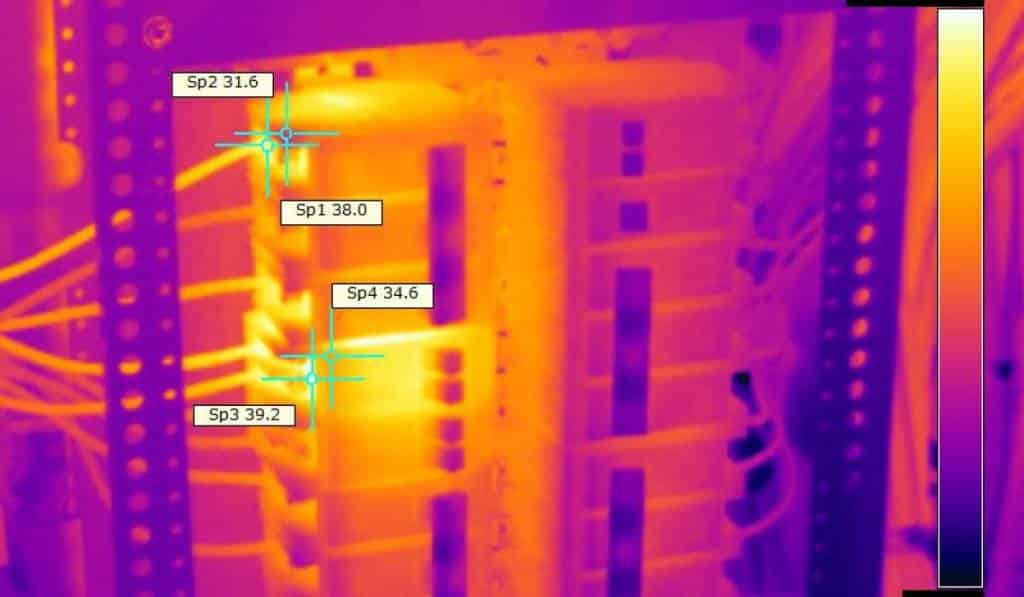
Infrared inspections for electrical systems involves inspecting the conductors, circuit breakers, loads, and many other aspects of electricity. One of the most significant benefits of conducting an infrared inspection on the electrical system is being able to detect impending faults before they actually occur. This aspect of infrared inspections comes in quite handy for commercial establishments, where electrical power is needed at all times for operations. The inspections ensure that there are no downtimes, and any impending faults are taken care of before any breakdowns occur.
Infrared inspections are a non-contact method. This makes them quite ideal while working with electrical systems. The dangers of working with or around live electrical wires need no explanations. However, with the infrared thermographic cameras, you just need to image the components from a safe distance. This also means there are no downtimes during the inspection for establishments such as industries. In fact, the electrical system has to be live and on load, during the imaging.
Just like with the plumbing systems, electrical cables and components are often behind walls, above ceilings, and below the floor. During the inspection, no walls or ceilings have to be torn down to access the cables and the components. The imaging camera will easily capture all the components from wherever they are. Electrical components are quite distinctive, and it is quite easy to call them apart from other objects when the images are captured.
Ensuring your electrical systems are in good conditions not only enhances safety but also ensures you do not have to foot high electricity bills every month.
We could go on and on about the benefits of including an infrared thermographic inspection in your home inspections regime. It is already clear that it is quite essential to do so. In fact, the infrared thermographic inspection is the house inspection itself today. It is even used to inspect your home for parasites. It is a wholesome technology that has made home inspections quite easy. The technology continues to improve with each passing year. Infrared cameras are not more accurate and are producing sharper images. If you know anything about the way a home is structured, you can get an infrared imaging camera, and start inspecting your home yourself.
Infrared inspections are therefore very efficient and effective tools that tell you where the faults lie during home inspections. What make infrared inspections even handier is them being non-invasive and non-destructive. Let’s look into an emerging trend in the world of infrared home inspections—the use of drones.
Adding a new dimension by using drones
The use of drones of late has made it easy to collect views of areas that can’t be reached otherwise. Such areas may include certain locations in high buildings, dangerous roofs difficult to climb on to or the edges of window sheds that are risky to inspect if you need to climb them. The drones simply hover around the spot that needs to be inspected. No matter how difficult it is to reach a spot, a drone will get there and capture close-up shots and videos of it making vital data available to the inspection team.
Drones have therefore made collection of data from areas that are hard to access completely risk free. It’s no more necessary to reach difficult areas to carry out effective inspections. The drone gets there for you.
Being so useful, efficient and effective, the market for thermal imaging inspections is expanding rapidly. We share the latest trends with you.
Emerging market trends
The market for thermal imaging systems which was valued at $5.19 billion in 2020, it’s expected, will reach $7.92 billion by 2026. While the outbreak of Covid-19 did disrupt the global supply chain, the market demand is set to keep rising as several players launch new products. Honeywell has launched an AI-enabled thermal imager capable of detecting body temperature of those approaching the entrance of airports, factories, distribution centers, and other places with human congregations. The thermal imaging system market is set to grow well from 2021-26 across various regions of the world, especially in the Asia Pacific region. The image below illustrates the point.

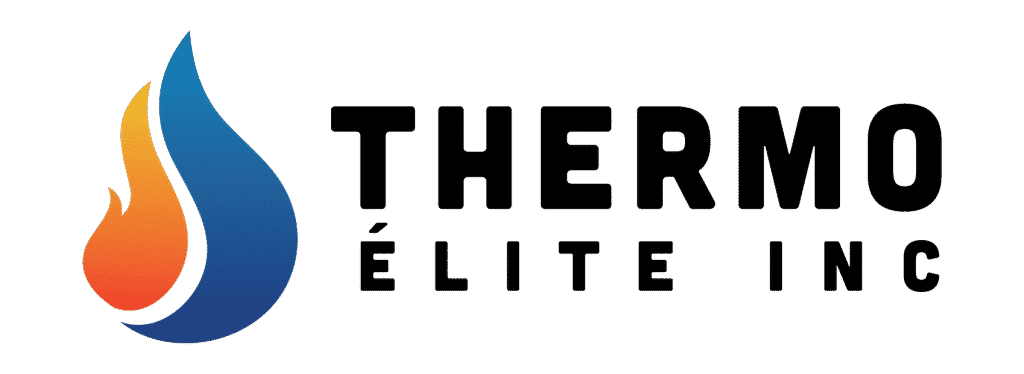

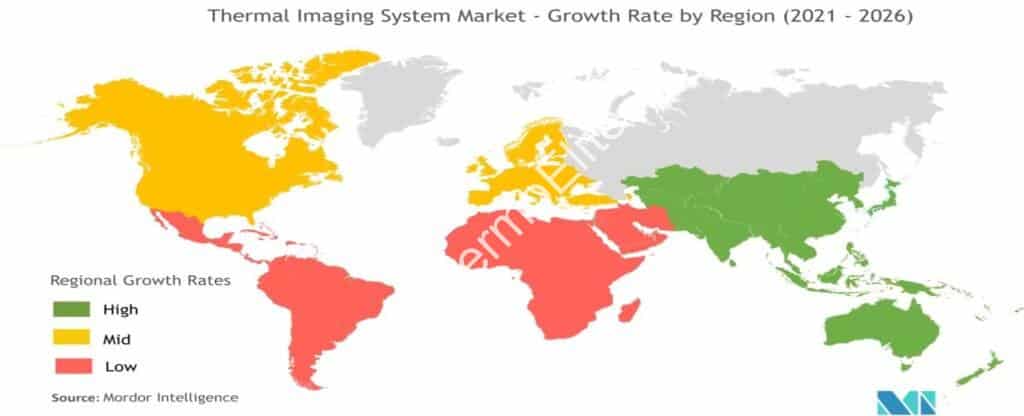
Add Comment